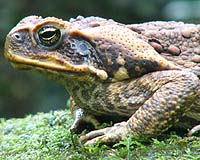 |
Davis CA (SPX) Mar 15, 2011 A variety of plant seedlings suffer most from competition when planted with close relatives, and grow best when planted alongside distant relatives in field soils, researchers from Case Western Reserve University and the University of California, Davis, have found. And, when seeds of the same species are buried among relatives in the field, the seeds germinate at a higher rate and grow better early in life in close relatives' habitats than distant relatives' habitats. The work will be published in the Proceedings of the National Academy of Sciences March 14. The findings, which have implications for Darwin's naturalization hypothesis, invasive species and responses to climate change, come from one of the basic quests in ecology, said Jean H. Burns, a professor of biology at Case Western Reserve. "One of our goals is to understand what mechanisms drive community assembly, why some species co-exist and why others can't," she said. Darwin predicted that newcomers that are most distantly related to established species in an ecological community would be the most successful colonizers. Close relatives might compete for the same resources, if they have the same or similar strategies. This idea has been called Darwin's naturalization hypothesis, and is predicated on the idea that close relatives, being more similar, will compete more strongly with one another than distant relatives. Burns and Sharon Y. Strauss, a biology professor at the U.C. Davis Center for Population Biology, set up a series of experiments to test whether more closely-related species are more ecologically similar than distantly-related species, and can relatedness thus be used to make predictions about species coexistence? In a lath house, they planted seedlings of 12 focal species of angiosperms, a diverse group of seed plants, in four groupings: alone in pots and with plants of the same species, the same genus, and the same family. The researchers used DNA sequences, which reveal evolutionary relationships, to gauge how closely related species were. When planted in the focal species' home soils, the closer the relationship between plants, the worse the focal species fared. The focal species fared best when grown with the most-distant relatives, consistent with Darwin's idea that competition will be strongest between close relatives. But, when planted in potting soil, the focal species grew as well or better with a close relative as with a distant relative. Darwin's hypothesis is supported by the greenhouse experiment in field soils but conflicts with the outcome found in potting soil. To learn why different soils produce opposite results requires more research. However, the dependence of the outcome of competition on soils adds another parameter to consider when predicting what kinds of plants will be successful invaders, the researchers say. The researchers also planted seeds of the 32 species in different habitats in the field at Bodega Bay Marine Reserve, Bodega Bay, Calif. Seeds of each species were planted in four groupings, those dominated by plants: of the same species, the same genus, the same family, and by distant relatives. Burns and Strauss found that seeds germinated and grew best during the first three months in habitats of plants of the same species and close relatives. The least successful were planted in habitats with distant relatives. These results suggest that newcomers that are closely related to the native community should be more likely to succeed, the opposite of Darwin's naturalization hypothesis. Likely because closely related species have similar niches, the investigators said. This suggests that the presence of close relatives may predict the success of a plant, potentially valuable information in the face of climate change.
Share This Article With Planet Earth
Related Links Case Western Reserve University Farming Today - Suppliers and Technology
 Knee-high fence to halt rampaging Australian toads
Knee-high fence to halt rampaging Australian toadsPerth, Australia (AFP) March 15, 2011 Australia's popular Kimberley wilderness region has resorted to a long knee-high fence to keep out the poisonous cane toad, which is rapidly overrunning the tourist attraction. A two-kilometre (1.25 mile) barrier will be erected at Emma Gorge, made from cloth to allow other animals to move through while keeping out the toads, prolific breeders which secrete a toxin that can kill pets and wil ... read more |
|
| The content herein, unless otherwise known to be public domain, are Copyright 1995-2010 - SpaceDaily. AFP and UPI Wire Stories are copyright Agence France-Presse and United Press International. ESA Portal Reports are copyright European Space Agency. All NASA sourced material is public domain. Additional copyrights may apply in whole or part to other bona fide parties. Advertising does not imply endorsement,agreement or approval of any opinions, statements or information provided by SpaceDaily on any Web page published or hosted by SpaceDaily. Privacy Statement |